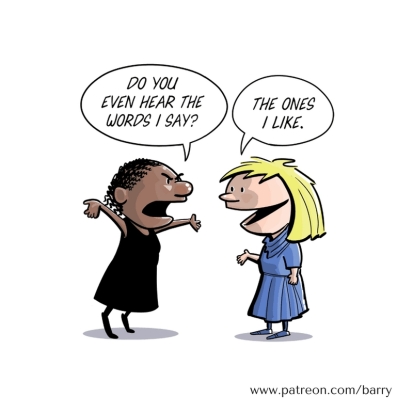Since it is impossible to discuss the issue of racism from the beginning, I will just start where I find myself. As an Assistant professor, it is probably safe for me to say that the multi-directional pressures and demands from administrations, departments, students, and parents are universal in academic life. What is different for faculty of color is the racism in the form of micro-aggressions encountered while going about the tasks of engaging a diverse student body and fulfilling other responsibilities in a challenging social and political environment. We are charged with supporting our students who also share these experiences. In “Blackballed: The Black and White Politics of Race on America’s Campuses, Ross (2015)”, Lawrence Ross points out that it never seems to matter when or how often we bear witness to these realities, the incidents are marginalized as being isolated, or the acts of “one bad apple”.

My goal here is to share some divergent experiences to reinforce to others that we, as faculty of color, are neither alone nor insane, or even overly-sensitive. Here are a few examples of what I have personally encountered:
- During a faculty orientation, the facilitator suggested the primary way of recognizing when a student was experiencing high anxiety or having a panic attack in class was a change in complexion. This is a “curious” indicator considering that approximately 20% of our students identify as Black or African American. Even considering the diversity within that group, the facilitator seemed completely oblivious to the inappropriateness of that indicator for those identifying as Black or African American where there would be no apparent physical change in complexion.
- I witnessed a Black female student recounting her anxiety about being judged about how she styled her hair: (a) If she went “natural” it may be interpreted as making a radical statement by the mainstream community; (b) a hair wrap might be critiqued as being “Aunt Jemima” and (c) wigs and other forms of “fake” hair might be interpreted as an identity crisis or trying to fit in. Her words to her classmate were literally, “you just don’t understand what Black women go through!”
- Following a controversial police shooting of unarmed Black men last year, I participated in two public forums in Fall 2016 which included law enforcement. A police chief opened his remarks by referring to Ferguson as the start of the problem between law enforcement and the black community. When the point was raised that it is a 400-year-old problem, he immediately apologized and backtracked – standard responses when caught marginalizing and isolating the issue. Many attendees were obviously traumatized by the recent events (I say this not because of any complexion variation that may or may not occurred) and expressed fear of any possible encounter with law enforcement.
- From the discussion in the forum mentioned above, the law enforcement representatives seem to have little understanding of the differences between community relations and community engagement. While the police chief was touting police-youth programs (public relations), I personally witnessed three White officers harassing three young Black men over a vehicle moving violation. The situation escalated to the point where one of the young men was pulled out of the car where he crouched as the officers searched the vehicle (and found nothing) while shouting at all three. Despite their “public relations” activities, this is an example how law enforcement engages the community.
- In another forum, a White colleague expressed his complete understanding of racial discrimination because he has had a ponytail since the 1960s and 1970s and often felt rejected by some of his counterparts. It never seemed to occur to him that while he could choose to cut his hair, skin color is not a choice.
- Finally, I attended a social gathering at a recent political science conference. Not recognizing anyone, I introduced myself to two colleagues and took a sip of wine. Seconds later a gentleman asked to join the table, introduced himself to my colleagues, then on looked directly into my face and turned his head without introducing himself. Make what you will of that!
As faculty of color, we must manage ourselves, encourage our students, and promote learning in sometimes less than ideal social climates. This task is often complicated by the denial or minimizing of the problems by segments of university communities and the society as a whole. We have to carefully choose when, where and how to respond to incoming fire lest we be labelled thin-skinned and aggressive. There are no simple answers, but know that you are not in this alone. As positive outcomes are dependent on multiple veto players, it is incumbent upon our personal leadership and the leadership of our colleagues, regardless of racial identity, to acknowledge these societal problems and constructively engage with one another to develop strategic approaches to support one another. We then must follow through, and repeat!
About the author: Harold Young is an Assistant Professor at Austin Peay State University in Clarksville, Tennessee. His research area is Public Law and he examines an American and comparative perspective on judicial institutional changes and decision making. In previous lives, he was a social worker, a health communications project manager, and an attorney-at-law. He can be reached via email at youngh@apsu.edu.
